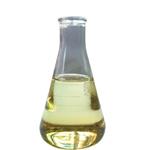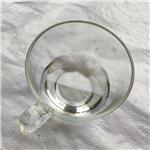Ethyl amyl ketone is a colorless liquid with amild, fruity odor. Molecular weight = 128.24; Boilingpoint = 157.2℃; Freezing/Melting point = - 56.7℃; Vaporpressure = 2 mmHg at 20℃; Flash point = 57℃ (oc). HazardIdentification (based on NFPA-704 M Rating System): Health0, Flammability 2, Reactivity 0. Insoluble in water
CLEAR LIGHT YELLOW LIQUID
5-Methyl-3-heptanone is a colorless liquid of low volatility.
It has an agreeable penetrating odor that resembles the
essence of apricots and peaches. Threshold odor concentrations
of 6 and ,5 ppm have been reported .
Solvent for resins; organic intermediate
Ethyl amyl ketone is used as a solvent forvinyl resins and nitrocellulose resins.
- 5-Methyl-3-heptanone can be converted into the corresponding gem-dihydroperoxide using aqueous hydrogen peroxide and chlorosulfonic acid as a catalyst at room temperature.
- It can be reduced to its corresponding alcohol using sodium borohydride in urea/choline chloride eutectic salt.
- It can undergo condensation with tert-butyl-sulfinamide to form the corresponding chiral tert-butyl-sulfinyl-ketimine, which can further react with ylides derived from trimethylsulfonium iodide and S-allyl tetrahydrothiophenium bromide to form highly substituted chiral aziridines.
U.S. production and importation of 5-methyl-2-heptanone
was estimated to be relatively low (<25,000 lb at a single
site) in 2005 as data for 5-methyl-2-heptanone were not
included in the 2006 U.S. EPA Inventory Update Reporting
database.
Exposure to ethyl amyl ketone can causeirritation of the eyes, nose, and skin. Athigh concentrations its exposure can leadto ataxia, prostration, respiratory pain, andnarcosis. A 5-minute exposure to 50 ppmmay produce a mild irritating effect on theeyes and nose in humans. Inhalation of3000 ppm of ethyl amyl ketone for 4 hourswas highly toxic to mice, and 6000 ppm for8 hours was lethal to rats. The odor thresholdis 6 ppm.
Combustible liquid; flash point (open cup)
59°C (138°F); vapor density 2 torr at 25°C
(77°F); fire-extinguishing agent: “alcohol”
foam, dry chemical, or CO2; a water spray
may be effective to cool it below its flash
point. It forms explosive mixtures with air
at elevated temperatures; the LEL and UEL
values are not reported.
Flammability and Explosibility
Flammable
Moderately irritating to
skin, eyes, and mucous membranes by
inhalation and ingestion. Narcotic in high
concentration. Flammable liquid when
exposed to heat, sparks, or flame. When
heated to decomposition it emits acrid
smoke. To fight fire, use foam, CO2, dry
chemical. See also KETONES.
PrimaryIrritant. Ethyl amyl ketone is used as a solvent for resins, inthe manufacture of perfume, and as an organicintermediate
If this chemical gets into the eyes, remove anycontact lenses at once and irrigate immediately for at least15 min, occasionally lifting upper and lower lids. Seek medical attention immediately. If this chemical contacts theskin, remove contaminated clothing and wash immediatelywith soap and water. Seek medical attention immediately. Ifthis chemical has been inhaled, remove from exposure,begin rescue breathing (using universal precautions, including resuscitation mask) if breathing has stopped and CPR ifheart action has stopped. Transfer promptly to a medicalfacility. When this chemical has been swallowed, get medical attention. Give large quantities of water and inducevomiting. Do not make an unconscious person vomit.
Chemical/Physical. 5-Methyl-3-heptanone will not hydrolyze because it does not contain a
hydrolyzable functional group.
Color Code—Red: Flammability Hazard: Store ina flammable liquid storage area or approved cabinet awayfrom ignition sources and corrosive and reactive materials.Prior to working with this chemical you should be trainedon its proper handling and storage. Ethyl amyl ketone mustbe stored to avoid contact with oxidizers (such as perchlorates, peroxides, chlorates, nitrates, and permanganates)since violent reactions occur. Store in tightly closed containers in a cool, well-ventilated area. Use only nonsparkingtools and equipment, especially when opening and closingcontainers of ethyl amyl ketone. Wherever ethyl amylketone is used, handled, manufactured, or stored, use explosion-proof electrical equipment and fittings
This compound requires a shipping label of“FLAMMABLE LIQUID.” It falls in Hazard Class 3 andPacking Group II
Forms explosive mixture with air.Contact with oxidizers may cause fire and explosions.Incompatible with strong bases, reducing agents, aldehydes,nitric acid, aliphatic amines
The initial threshold screening level (ITSL) for ethyl amyl keton is 220 μg/m3, with annual averaging time.
Ethyl amyl ketone wastes can be destroyedby incineration or by treatment with moltenmetal salts.



